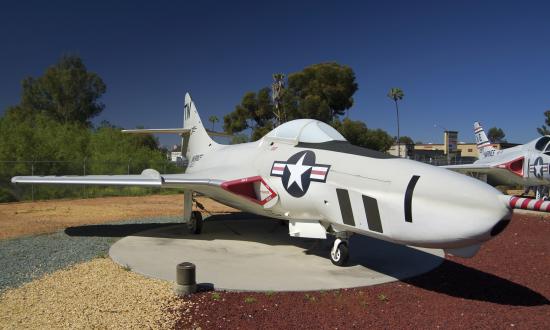An expedition privately funded and executed by two former U.S. Navy officers has successfully relocated, surveyed, and filmed the World War II destroyer USS Johnston (DD-557), the world’s deepest known shipwreck. Located in the Philippine Sea, the wreck is at a depth of 21,180 feet—by comparison, that’s 62 percent deeper than the wreck of the Titanic.
On 25 October 1944, during the Battle off Samar, the Fletcher-class destroyer engaged an overwhelming and vastly superior Japanese force to buy time for her escort carriers to escape, then was sunk in the action.
The Johnston was awarded a Presidential Unit Citation—the highest award that can be given to a ship. Her commander, Lieutenant Commander Ernest E. Evans, was awarded a posthumous Medal of Honor, the first Native American in the U.S. Navy to receive the medal, and one of only two destroyer skippers ever to have been so honored.
Victor Vescovo, a retired U.S. Navy commander, funded the expedition. He personally piloted his deep submergence vehicle Limiting Factor down to the wreck during two separate eight-hour dives. These constituted the deepest wreck dives, manned or unmanned, in history.
The wreck originally was discovered in 2019 by the late Paul Allen’s research vessel Petrel under the leadership of renowned ocean wreck explorer Robert Kraft.
On that expedition, photos of pieces of the vessel were taken by a remotely operated vehicle (ROV), but the majority of the wreck lay deeper than the ROV’s rated depth limit of approximately 20,000 feet.
It now has been discovered that the Johnston’s hull number is clearly visible
on both sides of the bow, and two full 5-inch gun turrets, twin torpedo racks,
and multiple gun mounts are still in place and visible on the superstructure. No human remains or clothing were seen during the dives, and nothing was taken from
the site.
Extensive research by retired Lieutenant Commander Parks Stephenson allowed
the position of the wreck to be plotted
as part of the development of a dive plan. “We used data from both the U.S. and the Japanese accounts, and, as is so often the case, the research brings the history back to life,” said Stephenson. “The accounts of the Johnston’s last day are humbling and need to be preserved as upholding the highest traditions of the Navy.”
Vescovo has held ongoing discussions with the Naval History and Heritage Command (NHHC) about investigation of the wreck and the protocols not only for preserving it, but for respecting it as the final resting place for many of its crew.
All of the sonar data, imagery, and field notes collected by the expedition will not to be made public but will be provided to the U.S. Navy for dissemination as it deems appropriate.
“We have a strict ‘look, don’t touch’ policy, but we collect a lot of material that is very useful to historians and naval archivists,”
said Vescovo.
“The NHHC greatly appreciates the efforts of Commander Vescovo and his expedition team in positively identifying the wreck of the Johnston,” said retired Rear Admiral Samuel Cox, director of the NHHC. “This brings clarity to the loss of the ship and helps close a chapter on one of the greatest last stands in all naval history—which ended in a completely unpredictable American victory against enormous odds.”







